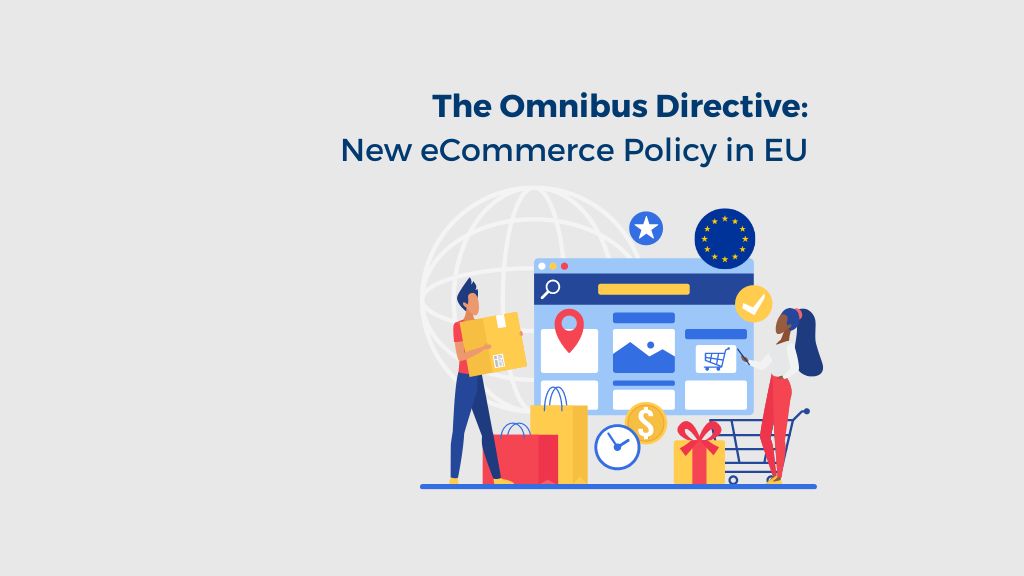

The Omnibus Directive has made waves within eCommerce and marketplaces, establishing new standards for displaying prices on sales websites. Despite its importance, many eCommerce owners do not understand it fully or are unsure how to integrate the Omnibus Directive into their pricing strategy.
If this applies to you, and you want to fully understand the directive, or how Price Intelligence tools can help you devise winning strategies, read on.
What is the Omnibus Directive?
The Omnibus Directive is a European Union regulation that emerged in response to the need to modernize and standardize regulations on cross-border eCommerce. Its primary objective is to ensure greater transparency and fairness in pricing practices, thereby protecting both consumers and honest businesses.
The Omnibus Directive seeks to create a fairer digital environment where consumers can make informed decisions, and retailers, whether eCommerce, marketplaces, or other sales websites, all operate on a level playing field.
Main changes introduced by the Omnibus Directive
The main change introduced by this directive is the obligation to display the total price of a product or service, including taxes and additional charges.
As the directive states, when reducing a price, next to the newly lowered price, the seller must indicate the lowest price applied during the last 30 days, so that the customer can clearly see the actual discount. The directive also reinforces the rules on reviews and ratings, requiring them to be authentic and verifiable, which directly affects how eCommerce manage and present these reviews.
Low-price strategies within the new Omnibus regulations
Adapting to the Omnibus Directive requires eCommerce to rethink pricing strategies carefully.
Firstly, a comprehensive review of pricing systems will be essential to ensure complete transparency in how costs are presented. This involves including all taxes and additional charges right from the start of the purchase process. The seller must specify all mandatory taxes, fees, or price components to comply with the regulations. If you implement repricing strategies, remember that next to the new reduced price, the last price offered must appear, giving greater transparency to the actual discount. Remember that ultimately the Omnibus Directive aims to develop a more ethical and transparent approach to promotions and discounts, ensuring that reduced prices are genuine, not misleading. Keep this in mind when implementing your low-price strategy.

Benefits of the right pricing strategy
A pricing strategy aligned with the Omnibus Directive delivers numerous benefits to online businesses. Some of the most significant are as follows:
- Improves pricing strategy transparency and credibility.
- Increases customer confidence and satisfaction.
- Boosts retention and attraction of new customers.
- Avoids misleading pricing practices.
- Promotes fair competition in the market.
- Highlights the quality and value of the product or service.
- Promotes ethical and transparent pricing practices.
- Increases customer loyalty.
- Contributes to the sustainable growth of the business.
At Minderest, we offer advanced solutions that will allow you to adapt to the Omnibus Directive, improving legal compliance, while implementing an optimized pricing strategy in your eCommerce.
Remain competitive and up-to-date with all pricing regulations efficiently, with the constant flow of information provided by Minderest’s Price Monitoring tool.
Find out how Minderest can take your business to the next level.
Contact our pricing experts to see the platform in action.
Related Articles

AI Agents and Holiday Season: How to Adapt Your Pricing Strategy
Holiday season planning used to revolve around creative campaigns, emotional storytelling, and optimizing the user experience. However, a silent revolution is changing the rules of the game. The rise...
How Surveillance Pricing Works and Its Applications for Your Business
The term "Surveillance Pricing" might conjure images of corporate espionage and price manipulation. However, this initial perception hides one of the most sophisticated and powerful strategies in...